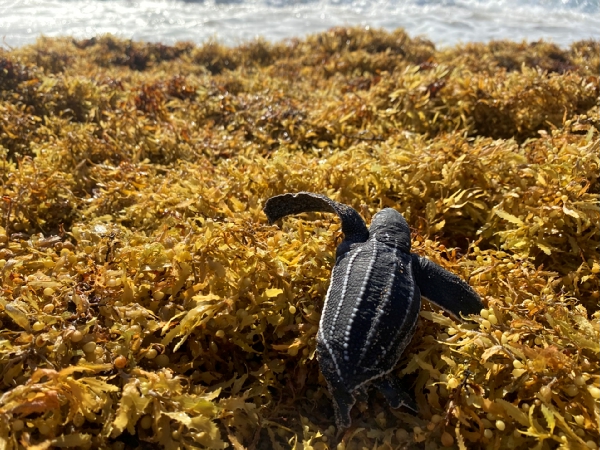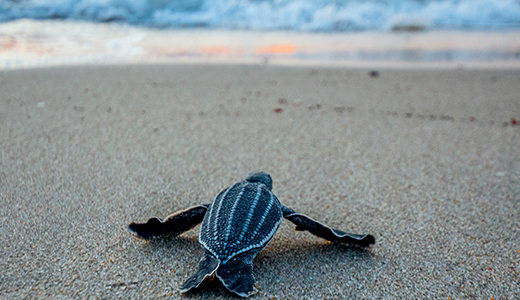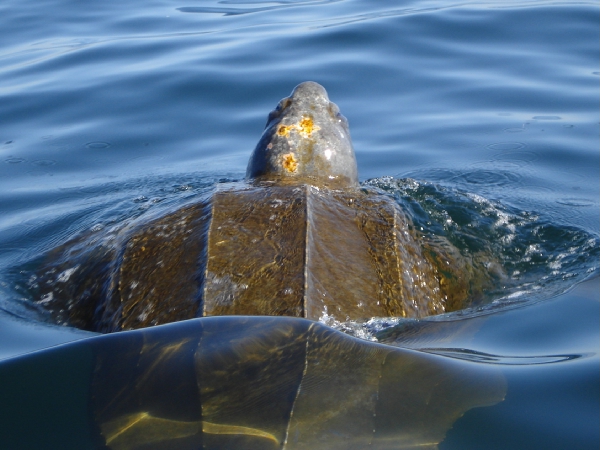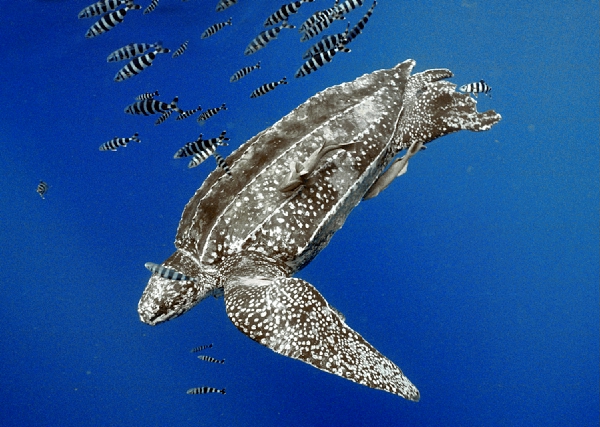It’s Pacific Leatherback Conservation Day, and I turtle-ly can’t wait to share my favorite facts about leatherbacks

Each year, October 15 is designated as Pacific Leatherback Conservation Day. It presents the perfect opportunity to celebrate this large, one-of-a-kind sea turtle—and I can’t wait to share some of my favorite leatherback turtle facts with you.
But first, we can’t talk about leatherback sea turtles without acknowledging that these incredible animals are in trouble. They’re considered Endangered under the Endangered Species Act, and face habitat loss, entanglement in marine debris and injuries from boat strikes. As if that wasn’t enough, they’re increasingly at risk from one of the biggest threats to our ocean: climate change.
Love our content?
Sign up to never miss an update!
…loading
Thanks for signing up for Ocean Conservancy emails.
We must act now to protect leatherback sea turtles from extinction. Take the pledge today: promise to actively “E.V.O.L.V.E.” to help our oceans’ turtles!
Swim on for some sea–riously special facts about leatherback sea turtles.

- You may already know, when it comes to size, the leatherback sea turtle stands out among the rest. They are the largest sea turtle in the ocean: growing up to seven feet in length and weighing more than 2,000 pounds.
- Their size isn’t their only distinguishing trait. Leatherbacks get their name from their smooth, bluish-black leathery skin. Unlike other sea turtles who have hard outer shells, leatherbacks have soft, rubbery backs.
- Leatherback sea turtles go the distance: they are the most migratory and wide-ranging of all sea turtle species. They’re found in the Atlantic, Pacific and Indian Oceans and have been known to swim more than 10,000 miles per year.

- During nesting season, female leatherbacks return to the beaches where they were born to lay their eggs. Each female will make up to five trips onshore and deposit between 60 to 120 eggs each time.
- Leatherbacks can dive deeper than any other turtle in the sea. They can swim to depths of 4,200 feet and hold their breath for almost an hour and a half.
- Although all leatherback sea turtle populations are listed as endangered, the Pacific populations are most at risk. Scientists estimate Pacific leatherbacks have declined by more than 80% in the last 40 years.
Today, our ocean’s sea turtles are facing more threats to their existence than ever before. From marine debris to light pollution to exposure to habitat destruction, these animals need our help.
If you’re, like me and can’t get enough of the leatherback sea turtle, be sure to check out our Wildlife Fact Sheets to learn even more about this large, loveable marine reptile.
